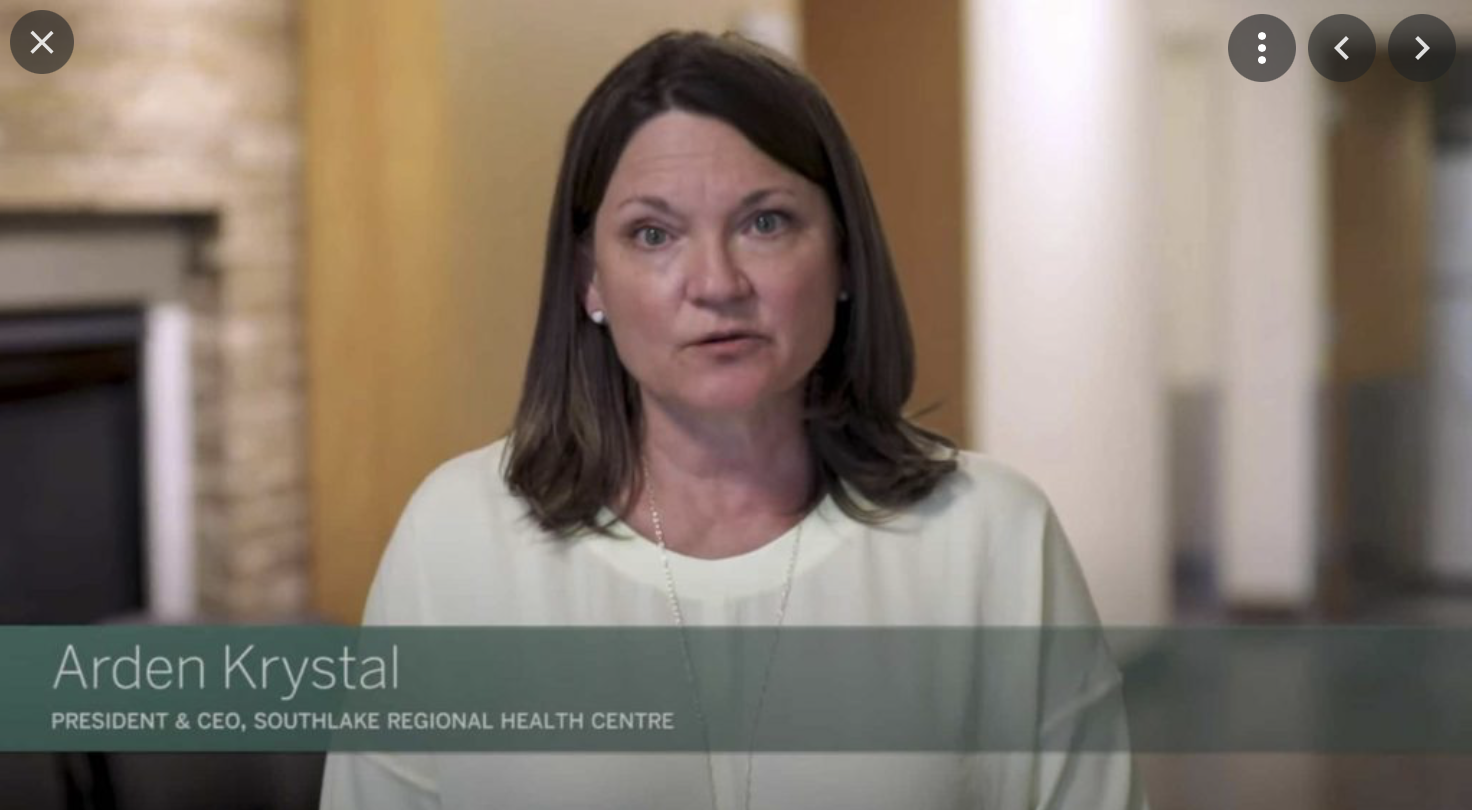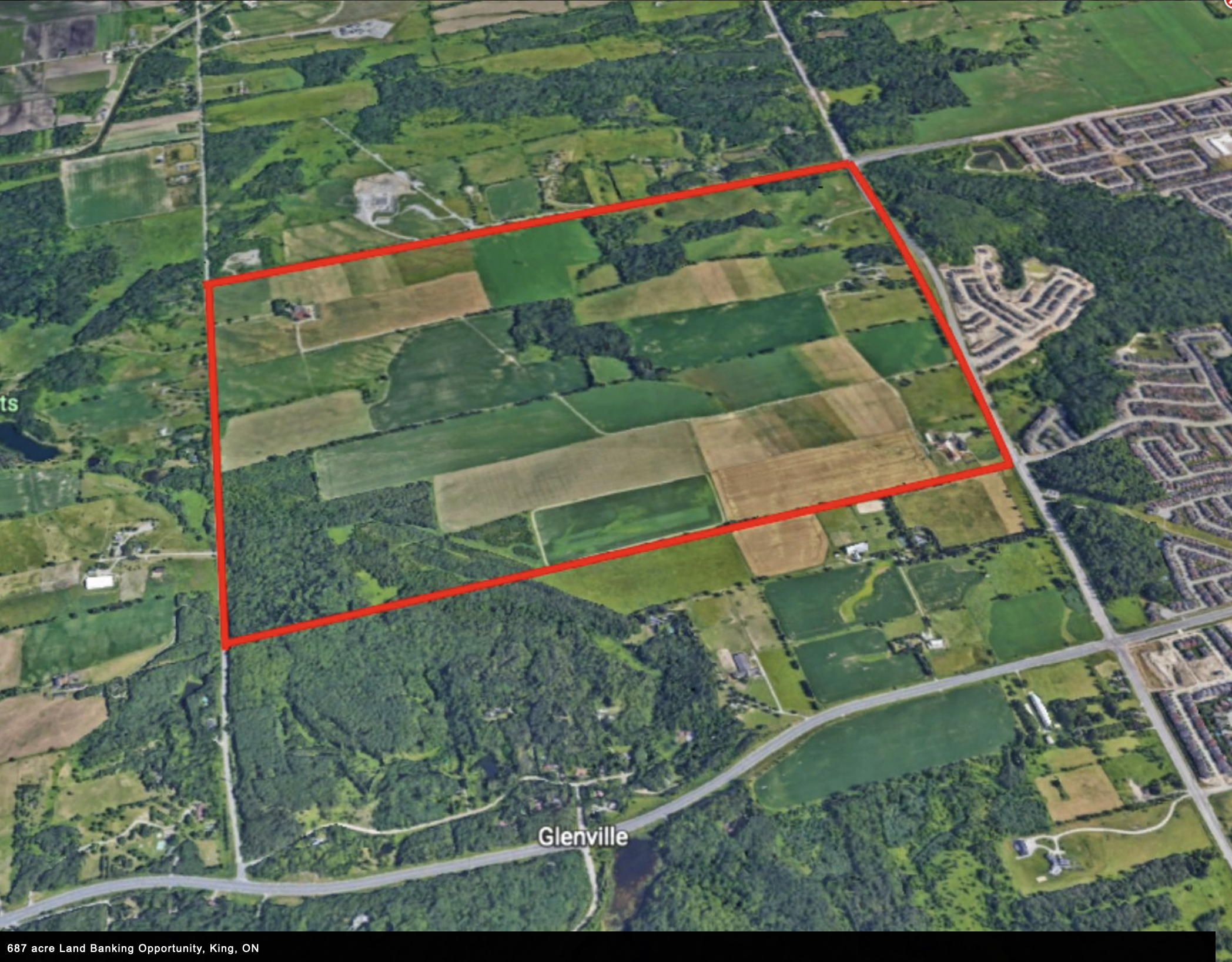- Details
- Written by Gordon Prentice
The Mayor of King, Steve Pellegrini, today revealed that the Township facilitated the in-person meeting on 1 November 2022 between Michael Rice and Southlake Hospital which resulted in Greenbelt land being offered to Southlake for a nominal fee.
This was three days before the Government first publicly announced that certain lands in the Greenbelt (including the Rice lands) were to be opened up for development.
Mayor Pellegrini told me earlier today:
“Rice Group reached out to the Township initially to meet regarding their lands in King. Subsequently, the Township facilitated a meeting with the Rice Group and Southlake Hospital.”
Mayor Pellegrini is sticking to his story that the Province can build a hospital anywhere it likes. He insists:
“The Province does not require removal of land from the Greenbelt to build a hospital. They may build provincial infrastructure on any land that they deem suitable.”
If he is following the advice of professional planning staff in his own municipality then it puts them at odds with the Region’s Chief Planner, Paul Freeman, who says:
“a hospital would be considered institutional and directed to settlement areas given the agricultural designation on the subject lands.”
On 1 February 2023, Mayor Pellegrini told Newmarket Today they had been looking for a new site for a hospital since 2019 and had explored the area for that reason. He said a different landowner had offered land in that vicinity.
I am waiting to hear from the Municipality how they went about looking for a suitable site in King. How did they “explore the area” and who was involved in the search? The Mayor says a different landowner had offered land in the vicinity? Who was that landowner and was he or she prepared to gift Greenbelt land to Southlake? Will he tell the Integrity Commissioner even if he won’t tell me?
Although King does not have any records relating to the 1 November 2022 meeting Southlake does.
We wait to hear more.
This email address is being protected from spambots. You need JavaScript enabled to view it.
Read more: Selling the Greenbelt: Rice asked for meeting with Southlake
- Details
- Written by Gordon Prentice
Tom Vegh, the politician who supped at the developers’ trough for years, yesterday turned on his former paymasters.
Speaking in yesterday's debate at York Region on the impact of Bill 23 (More Homes Built Faster Act 2022), Vegh accused the Ford Government of bringing in legislation which would mean taxpayers subsidising developers.
“We also talk about the taxpayers subsidizing growth. This is really a case of taxpayers subsidizing developers.”
These are very same developers who have subsidized Vegh for years. Bailing him out. Saving him from disqualification for overspending on his election campaigns. Now he has the nerve to bite the hand that feeds him.
The "Ford Tax" impact
Vegh’s three-minute contribution was noteworthy as he rarely speaks in debates at the Region. He is mostly invisible. Comfortable when keeping his thoughts to himself.
Vegh also argued that any property tax increases resulting from Ford’s More Homes Built Faster legislation (Bill 23) should be dubbed “the Ford tax”.
“We keep talking about the property tax impact. This is just a comment about language. This is really the Ford tax impact and I think we should just just start calling it the Ford tax. Quite frankly, let him own it.”
With this statement Vegh has now burned his bridges with the Provincial Progressive Conservatives. For years he harboured the ambition of going to Queen’s Park himself. 
Tom Vegh MPP.
On 5 December 2016 Vegh told residents in Ward 1 that he was ready for a bigger challenge. In his Community e-letter he confessed he really wanted to be an MPP and he was up to it:
"If I am successful in the nomination and am given the opportunity to be your Newmarket-Aurora PC candidate, I promise to represent your interests at Queen's Park with the same vigor (sic) and professionalism as I have as your Ward 1 Newmarket councillor."
Impertinently, Vegh also suggested the projected tax rises presented by the highly competent Regional Treasurer, Laura Mirabella, should be vetted by an outside third party to give them more credibility. He said that third party would defend themselves:
“in a way that perhaps carries a bit more credibility than how we defend ourselves because of how people feel about government, politicians etc.”
Vetting Vegh
Vegh should know why people are skeptical of politicians and the promises they make. He is the man who solemnly promised a new public library in Newmarket. And a new Seniors' Centre. Neither materialised. We could have done with some independent third party vetting of Tom Vegh back then.
In her comments the Regional Treasurer referred to Hemson Consulting.
And, no, Tom it’s not “Hempen Consulting” or “Hempton Consulting”.
It’s Hemson.
This email address is being protected from spambots. You need JavaScript enabled to view it.
Update on 24 February 2023 from Newmarklet Today: The "Doug Ford Tax": York Region faces a 2% - 7% tax increase due to Bill 23
Update on 7 March 2023: From Newmarket Today: Deputy Mayor declares campaign deficit
Click “Read more” below to read Tom Vegh’s very rare contribution to the debate at York Region.
Read more: Tom Vegh turns on Doug Ford and his former paymasters – the developers
- Details
- Written by Gordon Prentice
Bob Hepburn writes in this morning’s Toronto Star that political parties should be allowed to contest municipal elections. (Click "Read more" below) 
I agree.
The Province bans political parties from fielding candidates in municipal elections peddling the fiction that all candidates are independents, untainted by political ideology who just want the best for their patch.
In the race to succeed John Tory as Mayor of Toronto Hepburn says
“…most people will cast their ballots based more on sheer name recognition rather than where the candidates stand on critical issues or where they lie on the right-left spectrum.”
Hepburn goes on:
“The arguments for municipal parties are convincing. If the candidates were allied with established parties, we would better understand where they fit into the bigger picture for Toronto.
There would be party platforms, providing voters with vital information about candidates to better help them make their choices. Voter turnout, traditionally pathetic for local elections, could potentially increase. Parties help to recruit candidates and finance their campaigns, which could lead to greater diversity of serious candidates.”
Collapsing turnout
In a blog posted a few days before the last municipal election on 24 October in Newmarket I predicted that two-thirds of people wouldn’t vote. That was a big under-estimate.
In the event, turnout in the Town was a lamentable 24%.
Political parties – or newly created local parties - just might drive up voter turnout.
My experience of running for election locally last October only reinforces my view that things have got to change if we are to get people interested and engaged in local politics. The indifference and ignorance on the doorstep about municipal government and how it works was a real eye-opener.
I spent a lot of time talking to people. There was no rosette on my lapel to give voters a rough idea of my politics. I had to start from scratch explaining a bit about myself and why I was running. And then taking questions. Ten minutes at a doorstep was not unusual.
Raising the cash to campaign
There are very real disincentives running for election as an “independent”. For a start, you’ve got to raise large sums of money.
When I ran for Deputy Mayor and Regional Councillor the rules allowed me to spend a truly colossal $57,153.35 on my campaign. My self-funding limit (the amount my spouse and I could spend on the campaign using our own money) was an eye-watering $17,241.40. In the event I only spent a small fraction of what was allowable.
But these huge sums of money would deter most people from throwing their hat into the ring. The alternative is to campaign on a shoe-string and hope for good local coverage in the press and media and an effective performance in the election debates (if there are any).
Heavy lifting
Political Parties get a bad press (often for good reasons) but they do the heavy lifting for candidates. They provide the finance and the support.
They would allow people to run for Mayor or Deputy Mayor (where the campaign limits are highest) without breaking the bank. (But if people want to run as independents there's nothing to stop them.)
Like-minded people could set up local parties to contest elections. Let’s say… “Newmarket First”. Candidates running under that banner would have a common set of priorities which they would present to the public, sharing campaign expenses and raising money as a local Party.
But if this is to work, political parties would have to reinvent themselves as local campaigning organisations. Identifying issues that people feel strongly about and offering solutions.
Hollowed out
And that is a big ask. Too many are atrophied and hollowed out with tiny memberships, leaving it to their MPs or MPPs (if they have one) to be their public face.
At their best, political parties shape the agenda and have a long institutional memory. When everyone else has forgotten the details of a crisis or local calamity or misjudgement, they can remember what happened and why. They can also bring in new blood, encourage younger people to get involved, and mentor those who might wish to run for office one day.
I had to run as an independent last October because the system wouldn’t allow anything else.
Silly system.
This email address is being protected from spambots. You need JavaScript enabled to view it.
Read more: Political Parties should be allowed to contest municipal elections. Discuss
- Details
- Written by Gordon Prentice
Southlake Regional Health Centre was offered Greenbelt land for a nominal fee on 1 November 2022 – three days before the Ford Government announced that it would be opening up parts of the Greenbelt for development. Southlake has records of that key 1 November 2022 meeting and will release them to me – or not – by 3 April 2023. 
It seems to me people were tipped off in advance that the Government's policy on the Greenbelt was about to change and there was an opportunity to make millions of dollars overnight.
Backstory: On 1 November 2022 an in-person meeting was held involving the Mayor of King, Steve Pellegrini, Michael Rice and representatives of Southlake Regional Health Centre. At that meeting Michael Rice, the new owner of the Greenbelt lands in King south of Miller’s Side Road and west of Bathurst (the Rice lands), offered some of his lands to Southlake for a nominal fee. This meeting took place three days before the public announcement by the Minister of Municipal Affairs and Housing, Steve Clark, that certain lands were to be removed from the Greenbelt and opened up for development. These included the Rice lands which were removed from the Greenbelt in December.
Rice’s company Green Lane Bathurst GP Inc bought the huge 687 acre tract of Greenbelt on 15 September 2022 for $80M from Bob Schickedanz, then President of the Ontario Home Builders Association.
Bob Schickedanz, Luca Bucci, Steve Clark
At the time of the sale the Chief Executive of the Ontario Home Builders Association was Luca Bucci who had previously served as Chief of Staff to Steve Clark from January 2021 until April 2022.
I have always found it perplexing that Schickedanz sold the land for $80M when he must have known that it would be worth many times that amount if it could be opened up for development.
Indeed, the estate agent acting for Bob Schickedanz, John Dunlap, advertised the 687 acres as a
“prime land banking opportunity”
in a strategic location south of the proposed highway 400-404 link and where
“the surrounding municipalities are almost out of development land”
Dunlap, who owns land immediately adjacent to the Rice lands at the intersection of Bathurst and Davis Drive West, served on the Board of Southlake until September 2022.
The land Dunlap, acting as agent, sold to Rice had been in the ownership of the Schickedanz Brothers since 30 October 2000.
Freedom of Information
Last month I filed a Freedom of Information request with Southlake Regional Health Centre asking for sight of all records held by them – including emails, phone call and meeting records – relating to that 1 November 2022 meeting.
Earlier today Southlake told me:
“The disclosure of the records that are relevant to your request may affect the interests of a third party. The third party whose interests may be affected are being given the opportunity to make representations about the release of the record.”
and that
“A decision on whether or not the record will be disclosed will be made by April 3, 2023, pursuant to section 28 of Freedom of Information and Protection of Privacy Act, which is attached to this letter as Schedule “A”.”
(Click “Read more” to see the Schedule)
Pellegrini says nothing
On 24 January 2023 I wrote to Mayor Pellegrini about the I November 2022 meeting:
Last month I filed a Freedom of Information request with your municipality asking for sight of records held by the Township relating to the commitment given by the landowner of certain Greenbelt lands in King to provide the necessary lands for the Southlake Regional Health Centre for a nominal fee.
This commitment was reflected in the motion you moved at the Committee of the Whole on 7 November 2022 which was carried unanimously.
On 20 January 2023 the Township clerk, Denny Timm, told me that no responsive records were located but he was able to tell me that the "nominal fee" commitment was conveyed verbally to you during an in-person meeting with Rice Group and Southlake representatives on November 1, 2022.
Would it be possible for you to let me know who called the in-person meeting on 1 November 2022 and for what purpose?
And did you ask the landowner for his evidence that the lands south of Miller’s Side Road, east of Dufferin and west of Bathurst were developable?
As this is a matter of public interest I very much hope you will feel able to share this information with me.
The Mayor has not yet replied.
This email address is being protected from spambots. You need JavaScript enabled to view it.

- Details
- Written by Gordon Prentice
My spies tell me that Tom Vegh is pleading for money to clear his election deficit and avoid disqualification for overspending. 
Four months after the election Tom is still struggling to find the cash to pay for his (very successful) campaign.
In the hullabaloo and excitement of the campaign he rashly promised he would not take money from developers or people who do business with the Town – or had done business with the Town.
That promise has come back to haunt him.
Tom now has a mighty problem. Lots of his developer friends have done business with the Town and they can’t or won’t bail him out. The Glenway developer, Marianneville’s Joanne Barnett, is a case in point.
Anxiety
Adding to his anxiety, Tom knows that I intend to go through his donations with a fine tooth comb to make sure everything is tickety-boo and there is no developer money in there.
In last October’s election Vegh told voters their donations would be collected.
“Your Donation Can Help. Donate to the Tom Vegh Re-election Campaign by using the form below to make arrangements for your donation to be picked up.”
So if you want to bail out Tom get in touch with him at This email address is being protected from spambots. You need JavaScript enabled to view it. and ask him to collect your donation. In person. He will be grateful.
Tom is on York Region’s Audit Committee so he knows how to manage your money, if not his own.
This email address is being protected from spambots. You need JavaScript enabled to view it.
Update on 7 March 2023: From Newmarket Today: Deputy Mayor declares election campaign deficit
Page 44 of 286